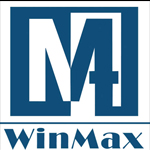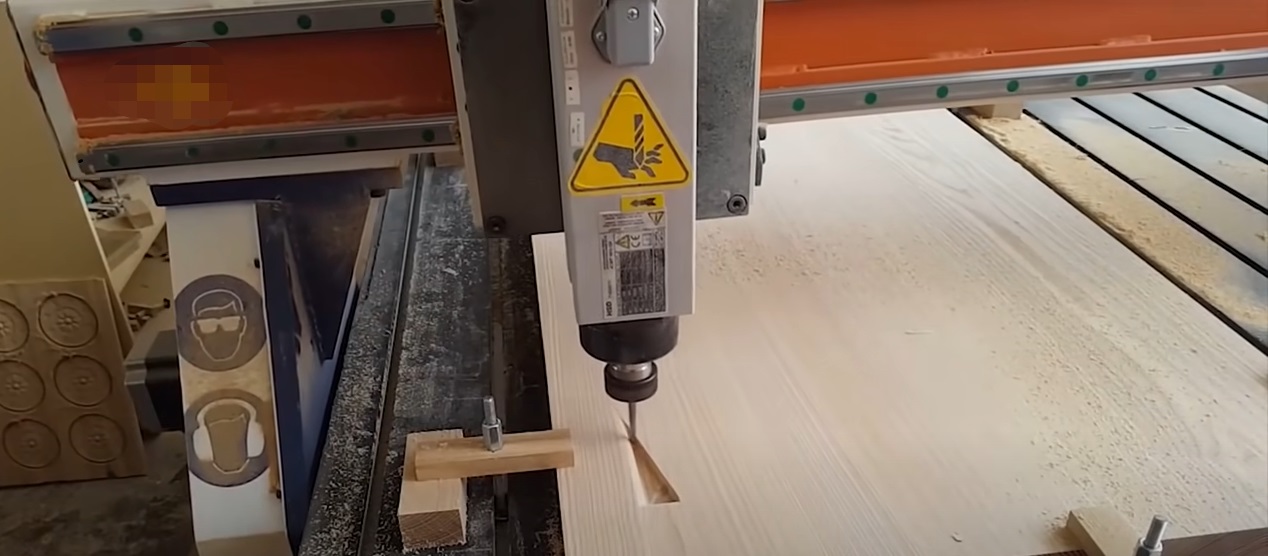CNC machining can be a complex process and because of that costs can rise quickly, this can be a real deal breaker for any-
engineer trying to get their parts CNC machined, which is why we created a list of 14 cost reduction tips that can help you minimize your CNC machining costs.
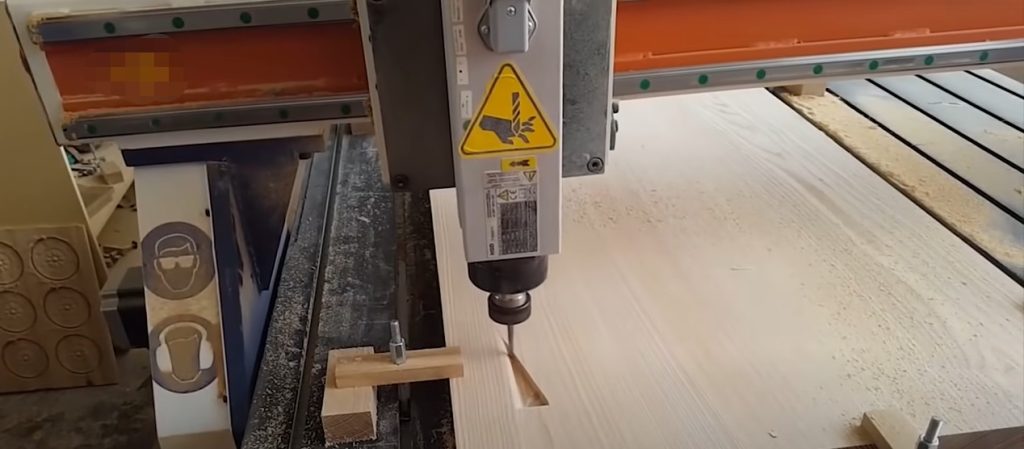
What affects the cost of CNC machined parts?
What is CNC machining? Today We’re going to cover the 14 cost reduction tips to help you the engineer: keep your CNC machining price to a minimum. Let’s take a quick look at what affects the cost of CNC machined parts.
The first,machining time and model complexity.
The more complex the geometry of a part is the longer it takes to machine and the more expensive it will be.
Second, startup costs.
These are related to cad file, preparation and process planning. They are significant for smaller volumes, but are fixed.With these there is an opportunity to reduce the unit price by taking advantage of economies of scale.
Third, material costs and finishes.
The cost of the bulk material and how easily that material can be machined greatly affect the overall cost.As a rule of thumb to minimize the cost of CNC machine parts stick to designs with simple geometries and standardized features.
Cost reduction tips od CNC machined parts
Now that we know what affects the cost of the CNC part, we can move on to our cost reduction tips.
Tip 1:Add a radius in internal vertical edges
CNC milling tools have a cylindrical shape and will create a radius when cutting the edge of a pocket to minimize cost. Add a radius of at least one third of the depth of the cavity, the larger the better, preferably use the same radius for all internal edges. On the floor of the cavity, you can specify 0.5 or 1 millimeter or no radius at all .
Tip 2:Limit the depth of cavities machining
Deep cavities affects the cost of CNC parts drastically. A lot of material needs to be removed, which is very time consuming, and special tools might be required when it comes to the depth of cavities. It’s important to keep in mind that CNC tools have a limited cutting length.
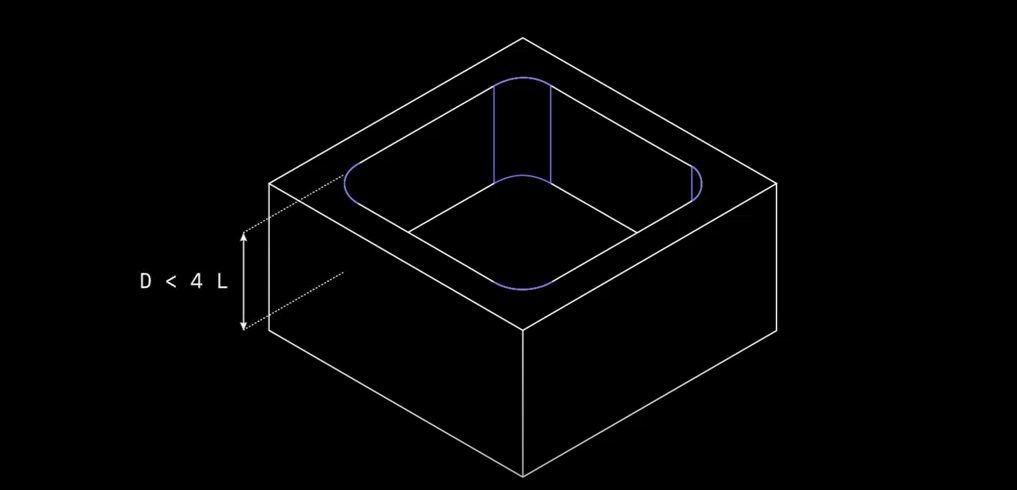
Typically they’ll work best when cutting cavities with a depth of 2 to 3 times their diameter. It is possible to cut even deeper cavities, but this will increase the machining costs. This is because special tooling or multi-axis CNC systems are required.To minimize costs, always limit the depth of all cavities to four times their length.
Tip 3:Increase the thickness of thin walls
Thin walls are prone to vibrations, deformation and fractures. Machining them accurately is therefore time and cost consuming. So unless weight is a major factor, thick sections are actually more stable and preferred.To minimize cost for metal parts design walls thicker than 0.8 millimeters, the thicker, the better for plastic parts, keep the minimum wall thickness above 1.5 millimeters。
Tip 4:Limit the length of threads
Threads that are longer than necessary may increase the cost of CNC parts, as special tooling may be required to minimize costs. Design threads with a maximum length of up to three times the whole diameter for threads in blind holes. It is recommended to add at least half the diameter of unthreaded length at the bottom of the hole.
Tip 5:Design holes with standard size
Holes can be CNC machined, fast and accurately, using standard drill bits for non-standard sizes. The hole must be drilled with an end mill tool, potentially increasing the cost. Therefore, standard drill bits are preferred to minimize costs be sure to design holes with a diameter. That is an increment of 0.1 millimeters for diameters up to 10 millimeters and 0 5 millimeters above that.Also limit the depth of all holes to four times their diameter. Deeper holes can be manufactured, but they will increase the cost as they are problematic to machine
Tip 6:Specify the tolerances
Only when necessary, defining type tolerances raises the cost of CNC machining. As it increases the machining time and requires manual inspection.
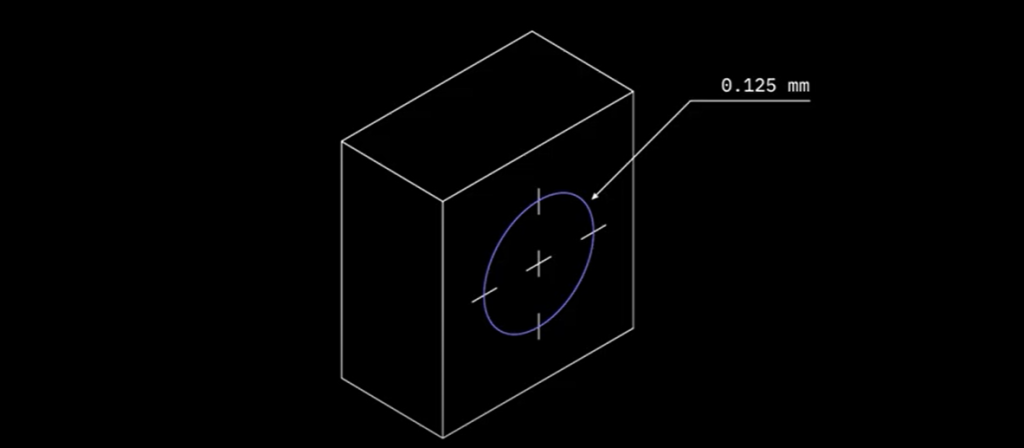
If a specific tolerance is not specified, the parts will be CNC using the standard tolerance, usually plus or minus 125 microns to minimize cost, define a single datum.
For example, the cross section of two edges, as a reference for all dimensional tolerances
Tip 7: Keep the number of machine setups to a minimum.
Design parts that can be machined in as few machine setups as possible, preferably in only one setup.
Repositioning a part adds to the cost, as it will usually need to be done manually for complicated geometries. This is even more important to consider as they may require a multi-axis CNC system.
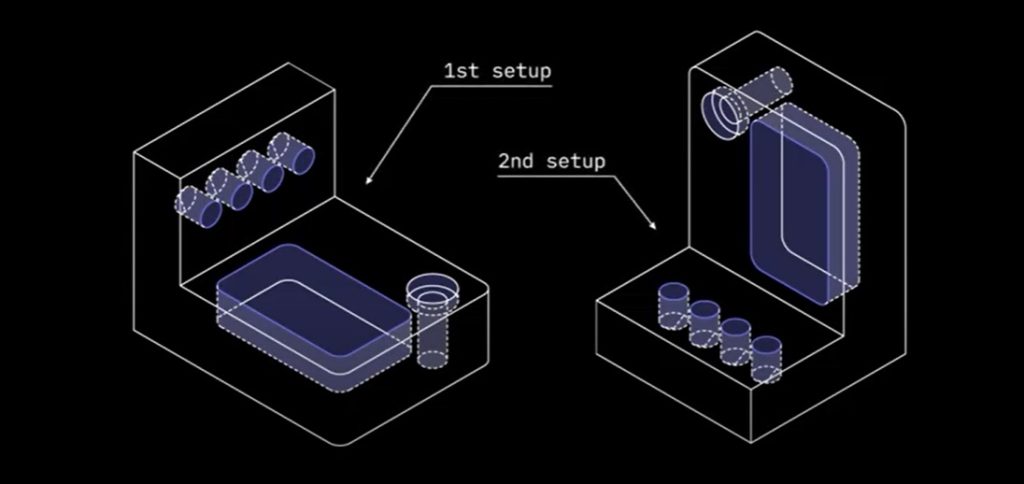
Further increasing the price consider splitting the parts into geometries that can be machined in one setup and then bolted or welded together.
Tip 8: Avoid small features with high aspect ratio.
Small features with high width to height aspect ratio are prone to vibrations and therefore difficult to machine accurately to improve their stiffness.
Consider adding bracing features or connecting small features to a wall. Also design features with a width to height aspect ratio of less than four .
Tip 9: Remove all text and lettering
Adding text on the surface of a CNC machine part can increase the costs as additional and time-consuming.
Machining steps are required if text is necessary, choose engraved over embossed lettering, surface finishing methods such as silk screening and painting are usually more cost effective when lettering or adding text to a CNC machine. Part 。
Tip 10:Consider the machinability of the material
If you have the option between two different materials, choose the one with better material machinability. Machine ability refers to how easily a material can be cut. The higher the machine ability,the faster a material can be CNC machined, which lowers the cost. The machine ability of each material depends on its physical properties. Typically, the softer and more ductile a metal alloy is the easier it is to machine.
Brass c360,is the metal with the highest machinability.
Aluminium alloys can be machined very easily.
Steels have 10 times lower machinability than aluminium and will take at least two times longer to machine.Note that different steel grades have different levels of machinability. You can find out more information on the machinability index of the different steel grades.
The machinability of plastics mainly depends on their stiffness and thermal properties.
During CNC machining plastics are prone to warping and melting during the process.
Pong or delrin is the easiest plastic to machine while abs comes in close second.
Peak and nylon are other common engineering plastics that are a bit more difficult to machine。
Tip 11: Consider the cost of bulk material
To minimize cost choose a material with low bulk costs, especially for lower volume. This table summarizes the price of metal, alloys and plastic materials commonly used in CNC for a sheet with dimensions of 6 inches by 6 inches by 1 inch. Aluminium 6061 is clearly the most cost effective way of creating metal prototypes, as it combines low cost and very good machinability.
Notice that the metals that offer greater machinability like stainless steel, 303 and brass c360 have a higher cost and, for this reason, are better suited for Large volume production as the material costs are overshadowed by the better machining times that allows for economies of scale when it comes to plastics, abs, nylon and palm are priced approximately the same as aluminium 6061
They are more difficult to machine though,so do expect the price to be higher.Peak is a very expensive material and should be used only when necessary.
Tip 12: Avoid(multiple) surface finishes
Only request multiple surface finishes when absolutely necessary. Surface finishes improve the appearance and resistance to harsh environments of CNC machined parts, but also increase their cost.
Tip 13:Think blank size
To minimize costs design parts with dimensions, three millimeters smaller than a standard blank size. The size of the blank or stock material may Affect the overall cost to ensure good accuracy. Some material must be removed from all edges of the parts. This can have a significant effect on material cost, especially for high volumes. As a rule of thumb, the blank must be a minimum of three millimeters larger than the end part.
Tip14:Taking advantage of economies of scale
Take advantage of economies of scale by ordering larger quantities or placing repeat orders.In CNC machining,the quantity greatly affects the unit price. This is because the startup costs are relatively high and when quantities are low. they represent a big percentage of the cost.
But for large quantities,these startup costs are almost eliminated because the costs are divided over many parts.
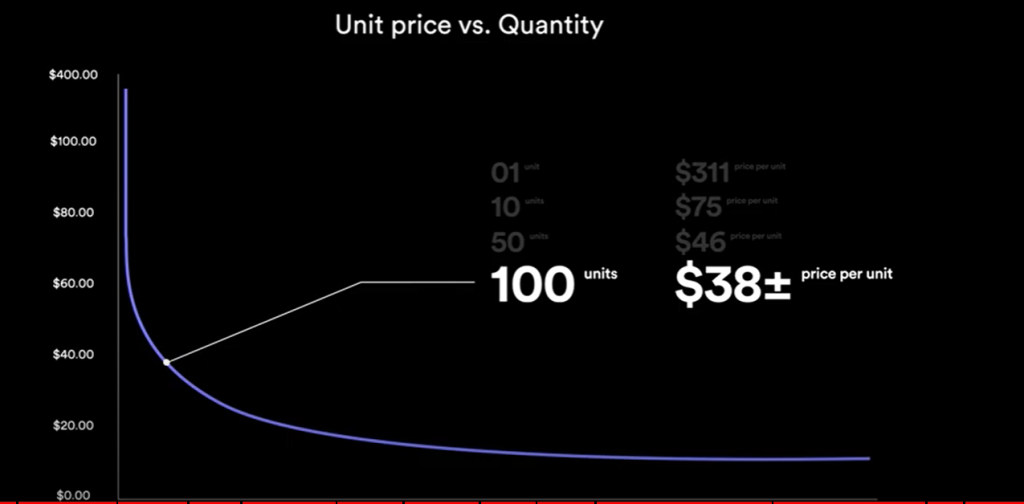
In this graph we summarize the average unit price of 12 different parts machined in stainless steel 304. The drop in unit price is almost exponential. Even a small increase in quantity can decrease the unit price by a lot notice that ordering very high volumes over 100 parts reduces the unit price by 5 to 10 times.The effect of economies of scale are noticeable also for low volumes.
Those are CNC cost reduction tips if you want to learn more about how to reduce cost for your CNC project, Contact us to get CNC machine price that we have. I hope you enjoyed our episode and learned something new.
